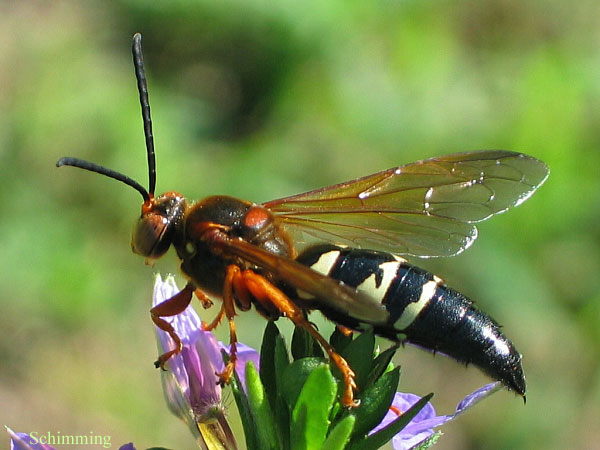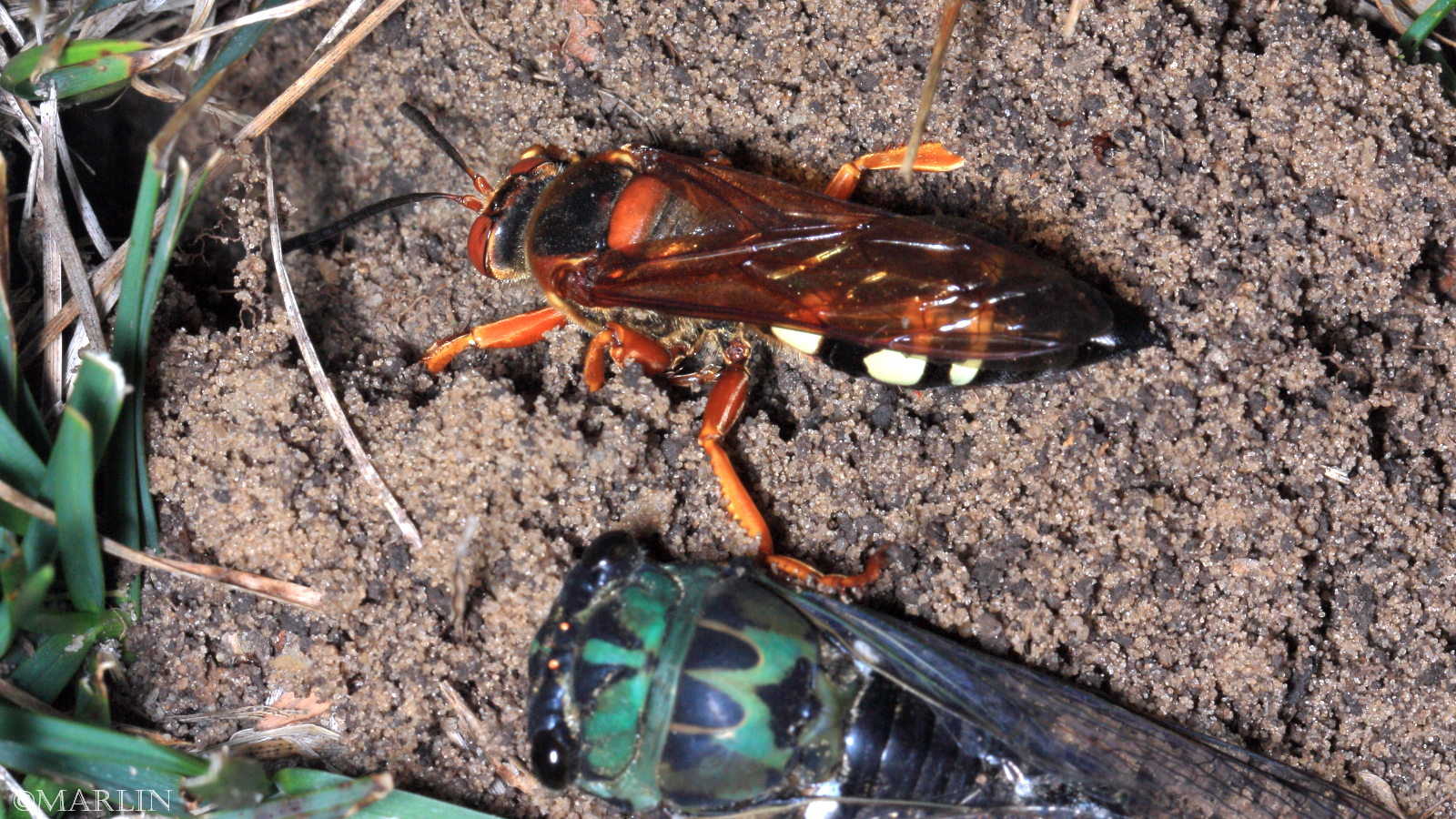Cicada Killer Wasp – Sphecius speciosus
Family Sphecidae — cicada killers, mud daubers, sand wasps, sphecid wasps
Adult female cicada killers burrow in sandy soils and dig a hole resembling a large anthill with one big hole. They then capture a cicada, paralyze it with venom, and provision the burrow with the still-living insect. They lay eggs which hatch after several days; the resulting larvae devour their meal, then spin a cocoon and overwinter. In spring, the larva leaves the cocoon to pupate, then hatches into an adult. Adults leave the burrow to mate and begin the cycle again. Adult male wasps die soon after mating, and females die soon after their eggs are exhausted.
Female on the way to her burrow carrying paralyzed cicada
The 13 and 17-year periodic cicada life cycles evolved in response to such parasitic predation. When billions of cicadas emerge all at once, their numbers completely overwhelm the capacity of the wasps to consume even an extremely tiny fraction. The odd-year timing and long time span between emergence events prevents predators and parasites with one or two-year life cycles from synchronizing.

Insects & Spiders | Bees & Wasps Index | Bees & Wasps Main | Beetles Index

